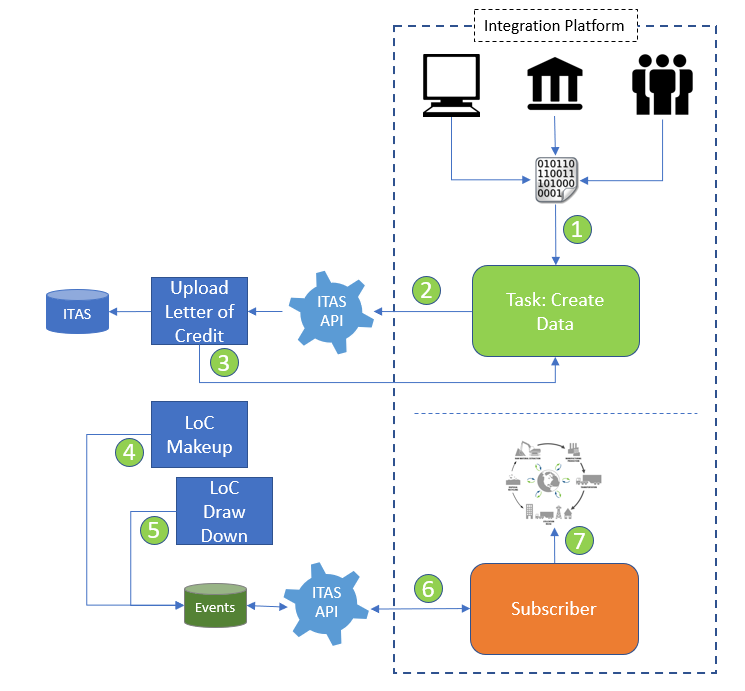Case Study: Letter of Credit
Overview
Figure 1 illustrates a typical life cycle of a Letter of Credit. Both Importers/buyers and exporters/sellers can use ITAS to manage the contract, logistics and finance processes including Letters of Credit.
Typical Life Cycle of Import/Export L/C
- Cash is transferred to buyer's bank
- L/C is transferred to seller's bank
- L/C is transferred to seller
- Product is shipped
- Documents are transferred to seller's bank
- Documents are transferred to buyer's bank
- Documents are transferred to buyer
- Cash is transferred to seller's bank
- Cash is transferred to seller

Figure 1
Manual Processing
LCMAINT has the ability to import documents containing the terms of the LC. Configurations within this application allow identification of the components of the SWIFT standard form MT700 which part-automates the creation process. Subsequent usage in terms of make-up and drawdown are manual processes.

Figure 2
Workflow Sample
Figure 2 illustrates a scenario where a workflow has been designed to take the MT700 instruction into ITAS and listen for two key events; make-up (contract assignment) and drawdown (L/C usage).
- Data is extracted from source (terminal, bank, service) and transformed (1)
- Data is uploaded to ITAS via API (2)
- Confirmation is returned to middleware (3)
Events notifications are generated when:
- Contract is assigned to the L/C (4)
- Drawdown on the L/C through Invoicing (5)
- Workflow monitoring task picks up Notification (6)
- Downstream workflows triggered (7)